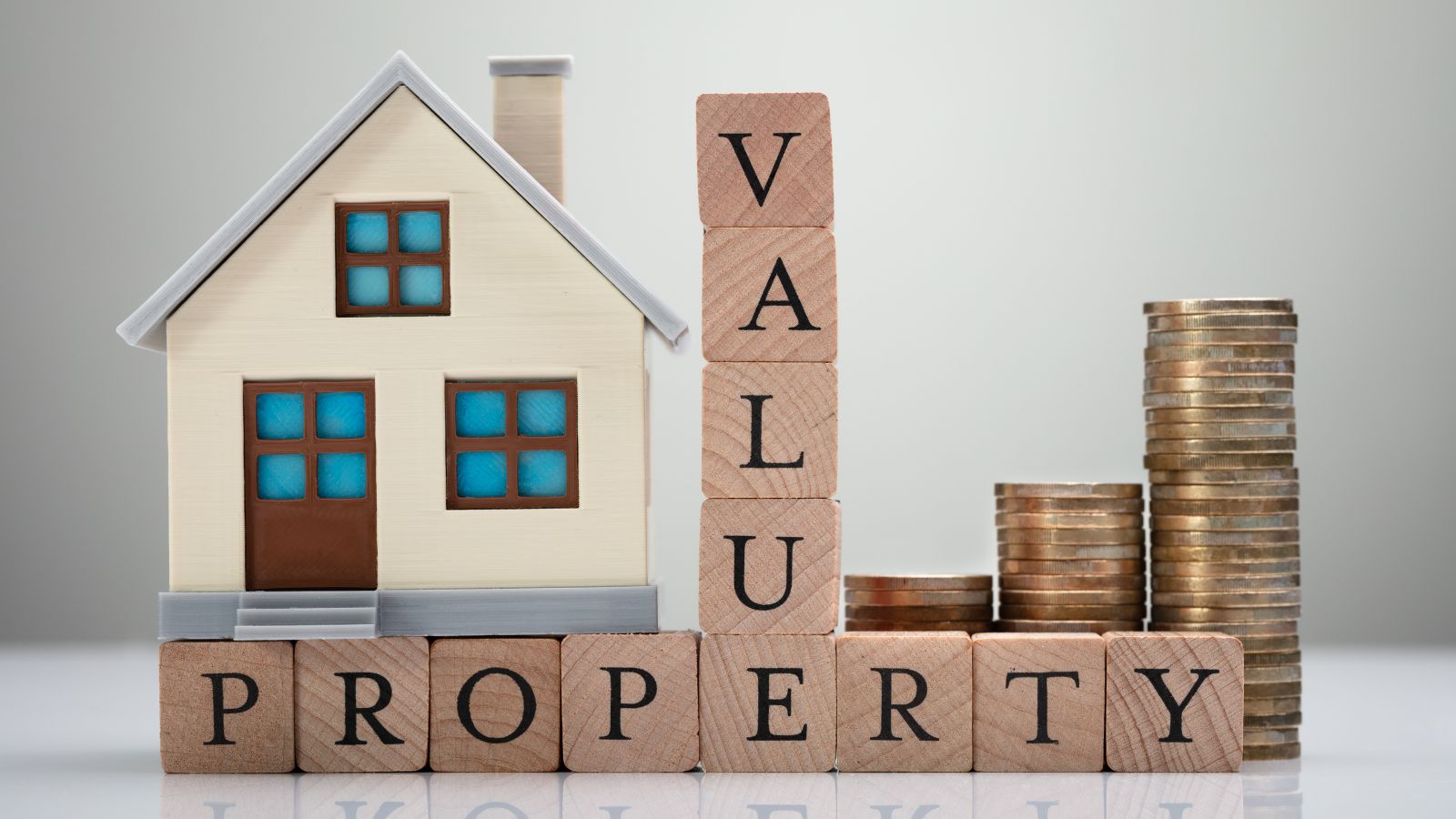In today’s fast-paced real estate market, a home isn’t just a sanctuary; it’s an investment. For many, it’s the most significant investment they’ll ever make. Every seller’s dream is to ensure this investment fetches its true worth or even more. When you plant the “For Sale” sign on the front lawn, you offer more than just a structure; you present a vision – a way of life, and give prospective buyers a canvas to paint their future. Yet, how can homeowners ensure they’re tapping into the full value of their property?
The answer often lies not just in the inherent attributes of the home but in the deliberate enhancements that boost its appeal and functionality. Strategically chosen home improvements can not only rejuvenate a space but can also significantly amplify the return on investment, offering sellers a bigger bang for their buck. As we delve into the myriad ways to elevate your home’s value, remember: sometimes, the hidden potential is just a few tweaks away.

Understanding Home Value
The real estate market is a vibrant tapestry of numbers, negotiations, and nuanced perceptions. Navigating the rich tapestry of the real estate market requires a deep understanding of what truly drives a home’s value: the tangible structure and a blend of intangible and tangible elements.
Factors that Influence a Home’s Value
Location, Location, Location: Undoubtedly one of the most pivotal aspects. A home in a sought-after neighborhood, near reputable schools, close to amenities, and with low crime rates often garners a higher asking price.
Size and Usable Space: More than just the square footage, the usable space matters. A well-designed 2,000-square-foot home might be more valuable than a poorly laid-out 2,500-square-foot one.
Age and Condition: New or recently renovated homes might fetch a higher price, but well-maintained older homes with character can be just as valuable.
Market Conditions: The economic climate, interest rates, and the housing market’s supply and demand can considerably swing a home’s value.
Home Updates and Renovations: Modern kitchens, updated bathrooms, and energy-efficient improvements can significantly boost a home’s worth.
Comparable Sales: Known as “comps” in the real estate industry, the recent sales prices of similar homes in the same area significantly determine a home’s value.
How Buyers Perceive Value
Every buyer enters the housing market with unique preferences, needs, and budget constraints. Yet, there are some common threads in how value is perceived.
Emotional Connection: Often, buyers are willing to pay more for a home that strikes an emotional chord with them, whether it’s a picturesque view, a cozy reading nook, or a spacious backyard.
Future Growth: A home in an area poised for future growth or development can be seen as a sound investment, increasing its perceived value.
Move-in Readiness: Homes that require minimal repairs or updates are often more appealing to buyers who don’t want the hassle of immediate renovations.
Cost of Ownership: Beyond the purchase price, savvy buyers consider the long-term costs, including maintenance, property taxes, and utility bills.
Understanding the home value and buyer perception facets allows sellers to strategically position their homes in the market for optimal returns.
Curb Appeal: First Impressions Matter
When potential buyers pull up to a property, they form their first impression. Before they even step foot inside, they’re making judgments based on the exterior aesthetics and landscaping. Unfortunately, the saying “Don’t judge a book by its cover” doesn’t always apply in the real estate world. That’s why ensuring your home has strong curb appeal is paramount.
Landscaping: A manicured lawn, strategically planted trees, and vibrant flower beds beautify a property and signal buyers that the home has been well-cared for. Regular lawn maintenance, such as mowing, edging, and weed control, can significantly improve the overall look and feel of the home’s exterior. Moreover, mature trees can provide shade, possibly reducing cooling costs in the summer and adding to the home’s value.
Exterior Maintenance: The external condition of a home acts as a direct reflection of its overall care and upkeep. Fresh paint can breathe new life into a home, making it look newer and more modern. Repairing the siding protects the house from the elements and can refresh its appearance. Meanwhile, roof assessments and potential repairs or replacements are crucial for curb appeal and the home’s safety and longevity.
Entryway Enhancements: The entryway acts as a welcoming gesture to potential buyers. An updated front door can offer better security and energy efficiency while providing a modern look. Pairing this with a new, stylish mailbox and modern house numbers can transform an outdated entrance into a contemporary and inviting one. The goal is to create a cohesive look that beckons buyers inside, making them eager to see more.
By focusing on these curb appeal aspects, sellers can set the stage for a positive home viewing experience, making their property stand out in a competitive market.
Modernize Key Rooms: The Heart of the Home
In real estate, certain rooms notably influence a home’s market value and allure for potential buyers. Predominantly, kitchens and bathrooms emerge as the most significant. They serve as functional spaces and areas where families converge, fostering connections and marking the rhythm of their days. Upgrading these spaces can yield substantial dividends for sellers seeking an impressive selling price.
Kitchen Updates
The kitchen, often dubbed the heart of the home, is a pivotal selling feature. Strategic improvements can dramatically shift its ambiance and utility.
Cabinet resurfacing or replacement: An immediate rejuvenation method, revamping cabinets can contemporize a previously dated kitchen.
New countertops and backsplashes: Transitioning to modern materials such as granite, quartz, or chic tiles can enhance the kitchen’s visual appeal.
Upgraded appliances: Modern, energy-efficient appliances elevate the room’s efficiency and resonate with environmentally aware buyers.
Bathroom Renovations
Bathrooms, essential for daily rituals and relaxation, greatly influence a home’s desirability when modernized.
New fixtures and fittings: Installing modern fixtures imparts a refined, updated aura to the bathroom.
Updated tiles and flooring: A revamp of tiles and flooring can metamorphose a mundane bathroom into an inviting oasis.
Efficient storage solutions: Clever storage addresses practical needs while optimizing space, making the bathroom feel more spacious and organized.
Energy-Efficient Home Upgrades
As global awareness about environmental sustainability grows, so does the inclination of homeowners and buyers towards energy-efficient properties. Making green upgrades reduces a home’s carbon footprint and can result in substantial savings on monthly utility bills. Homes with energy-efficient features can also command higher prices in the market, catering to a more eco-conscious buyer demographic.
Window Replacements: Older, single-pane windows can be major culprits in energy loss. Upgrading to double or triple-pane windows ensures better insulation, keeps homes warmer in the winter and cooler in the summer, and can lead to noticeable reductions in heating and cooling bills.
Energy-Efficient Appliances and HVAC Systems: Designers create modern appliances and HVAC (heating, air conditioning, and ventilation) systems with energy conservation in mind. Investing in these can drastically reduce energy consumption, decrease monthly utility expenses, and enhance the home’s overall comfort.
Solar Panel Installations and Benefits: Solar panels represent the forefront of green technology for homeowners. Installing solar panels can:
- Drastically reduce or even eliminate electricity bills.
- Increase property value, as many buyers appreciate the long-term savings associated with solar.
- Contribute to environmental conservation by reducing dependency on fossil fuels.
- Potentially avail homeowners of tax benefits or incentives, depending on local or federal programs.
Transitioning to a more energy-efficient home is not only an investment in the planet but also an intelligent economic decision that can boost a property’s market value and appeal.
Structural and Safety Improvements
When considering selling a home, the aesthetics and superficial improvements might be the first things that come to mind. However, a home’s structural integrity and safety are paramount and can significantly influence a buyer’s decision. By addressing and upgrading these fundamental aspects, sellers can increase the home’s value while providing assurance and peace of mind to potential buyers.
Foundation Assessments and Repairs: The foundation is the backbone of any home. Regular assessments can detect potential issues, and timely repairs ensure the house remains stable, preventing more extensive, costly damages in the future.
Roof Repairs or Replacements: Sturdy roofs protect homes from external elements. Roof repairs or, if necessary, replacements can prevent leaks and water damage and improve insulation, making the house more energy-efficient.
Electrical and Plumbing System Checks and Upgrades: The electrical and plumbing systems are vital for the daily functionality of a home. Regular checks can prevent potential hazards or inconveniences. Upgrading these systems brings the house up to modern standards and can result in better efficiency and safety.
Home Security Systems: With technological advancements, home security has seen significant innovations. Installing modern security systems, such as smart locks, surveillance cameras, and alarm systems, can add more protection to the property. It can also be a significant selling point for buyers who prioritize safety.
Ensuring a home’s foundational integrity and safety can greatly enhance its market value and appeal, making it a wise area of focus for homeowners preparing to sell.
Creating Additional Living Space
Building an In-law Suite: In-law suites, called granny flats or accessory dwelling units (ADUs), are self-contained living spaces within or adjacent to the main home. They typically include a bedroom, bathroom, living area, and full kitchenette. You can use these suites for aging parents, adult children or as a rental unit for additional income.
Constructing a Sunroom or Conservatory: A sunroom or conservatory is a creative way to add extra living space that connects you with the outdoors while providing shelter from the elements. These spaces are filled with natural light and can serve as a cozy reading nook, a dining area, or a place to enjoy indoor plants. They are particularly appealing in regions with varying seasons.
Expanding Living Areas: Consider expanding your existing living areas, such as the living room or family room, to create more spacious and open spaces for relaxation and entertainment. Knocking down walls to create an open floor plan can make your home feel larger and more inviting.
Building a Home Office: A dedicated home office is highly valuable in today’s remote work environment. Convert a spare bedroom or underutilized space into a functional home office with proper lighting, storage, and ergonomic furniture. A well-designed home office can attract buyers who need a versatile workspace.
Creating a Bonus Room: A bonus room offers versatility, allowing you to use it for various purposes. It could become a playroom, a home gym, a crafting room, or even a home theater. This flexibility appeals to buyers looking for homes catering to their needs and interests.
Finishing an Attic Space: In addition to converting attics into functional rooms, finishing an attic space can create a cozy and private retreat. Consider adding skylights or dormer windows to bring in natural light and make the space more inviting.
Enclosing a Porch or Deck: If you have an open porch or deck, enclosing it can provide valuable additional living space. A screened-in porch or a four-season room allows you to enjoy the outdoors year-round, providing a space for relaxation and entertainment.
Each option offers a unique way to maximize your home’s livable space, making it more appealing to potential buyers and increasing its overall value. The key is to assess your home’s layout and available space to determine which option aligns best with your needs and the preferences of your target market.
Home Staging for Maximum Appeal
Declutter and Depersonalize: Begin by decluttering your home. Remove excess items, personal belongings, and unnecessary furniture. A clutter-free space helps buyers visualize their belongings in the house.
Depersonalize by removing family photos and unique decor that may not appeal to a wide audience. The goal is to create a neutral canvas for potential buyers.
Clean and Repair: Ensure your home is spotlessly clean. Clean the carpets, floors, windows, and all surfaces. Make necessary repairs, like fixing leaky faucets, repairing cracked walls, and replacing burnt-out light bulbs. A well-maintained home gives the impression that it’s been cared for.
Enhance Curb Appeal: The first impression starts at the curb. Trim bushes, mow the lawn, and add fresh mulch or plants to the landscaping.
Consider repainting the front door, and make sure the entrance is well-lit and welcoming.
Furniture Placement: Arrange furniture to highlight the flow of each room. Avoid blocking natural pathways and ensure rooms feel spacious.
Use appropriately sized furniture to create a sense of scale and balance in each space.
Neutral Color Palette: Consider painting walls in neutral tones like soft grays, beige, or light pastels. Neutral colors appeal to a wider range of buyers and make rooms feel fresh and airy.
Maximize Natural Light: Open the curtains or blinds to let in natural light. Well-lit rooms appear larger and more inviting.
Add mirrors strategically to reflect light and create the illusion of spaciousness.
Highlight Key Features: Showcase the unique features of your home, such as a fireplace, built-in shelving, or architectural details. Make these focal points in the room’s design.
Set the Table: In the dining area, set the table with elegant place settings to help potential buyers envision family gatherings and entertaining in the space.
Add Fresh Flowers and Greenery: Fresh flowers or potted plants can add a touch of color and life to a room, creating a warm and inviting atmosphere.
Minimize Odors: Ensure your home smells clean and fresh. Avoid strong scents or odors that may be off-putting to buyers.
Remove Pets: If you have pets, temporarily relocate them during showings. Some buyers may have allergies or concerns about pet odors.
Remember, staging aims to help buyers imagine themselves living in your home. Creating a clean, well-organized, and inviting environment can increase the perceived property’s value and make it more appealing to potential buyers.
Conclusion: Elevating Your Home's Value
In the journey of selling your home, maximizing its appeal and value is a multifaceted endeavor. We’ve explored two pivotal strategies that can set your property apart in a competitive market: creating additional living space and expertly staging your home. When executed thoughtfully, these approaches can elevate your home’s worth and captivate potential buyers, ultimately leading to a successful sale.
Expanding your living space is like discovering hidden treasure within your own home. Converting underutilized areas, transforming an attic into a cozy retreat or converting a basement into a versatile living space, adds square footage and versatility to your property. These functional spaces cater to various lifestyles, appealing to a broader range of potential buyers. Whether they envision a growing family, a home office, or an income-generating rental unit, these additional rooms unlock new possibilities.
On the other hand, staging your home is the art of creating a compelling narrative for potential buyers. It begins with decluttering and depersonalizing, allowing visitors to envision their lives within your walls. A spotlessly maintained home, enhanced curb appeal, and skillfully arranged furniture create a captivating atmosphere. By thoughtfully highlighting key features and setting a welcoming dining table with fresh flowers, you provide a glimpse of the lifestyle your home offers. This attention to detail can profoundly affect how buyers perceive your property.
As you embark on this journey to maximize your home’s value, remember you’re not alone. A seasoned real estate agent can be your invaluable partner, offering expertise in market trends, pricing strategies, and buyer preferences. With their guidance, you can confidently navigate the process, ensuring that your home stands out in a crowded marketplace. So, are you ready to unlock the full potential of your home and embark on this transformative journey? Contact our experienced real estate agent today, and let’s work together to achieve your ideal sale. Your dream home sale is just a phone call away.
Understanding Home Value
In today’s fast-paced real estate market, a home isn’t just a sanctuary; it’s an investment. For many, it’s the most significant investment they’ll ever make. Every seller’s dream is to ensure this investment fetches its true worth or even more. When you plant the “For Sale” sign on the front lawn, you offer more than just a structure; you present a vision – a way of life, and give prospective buyers a canvas to paint their future. Yet, how can homeowners ensure they’re tapping into the full value of their property?
The answer often lies not just in the inherent attributes of the home but in the deliberate enhancements that boost its appeal and functionality. Strategically chosen home improvements can not only rejuvenate a space but can also significantly amplify the return on investment, offering sellers a bigger bang for their buck. As we delve into the myriad ways to elevate your home’s value, remember: sometimes, the hidden potential is just a few tweaks away.


